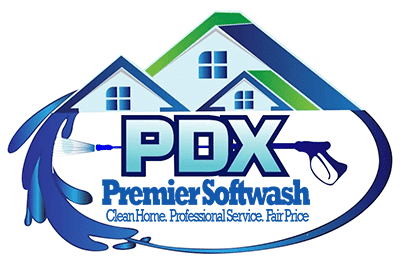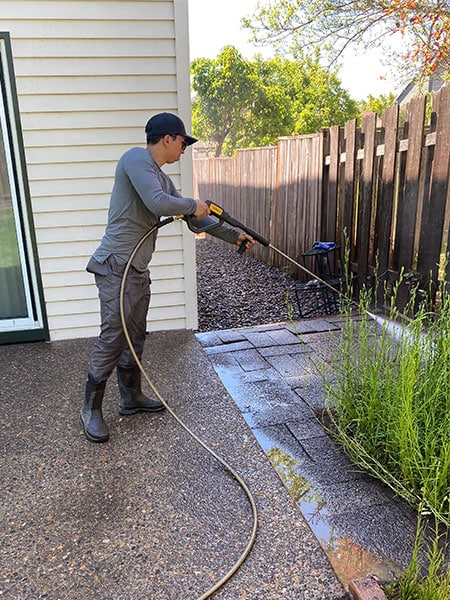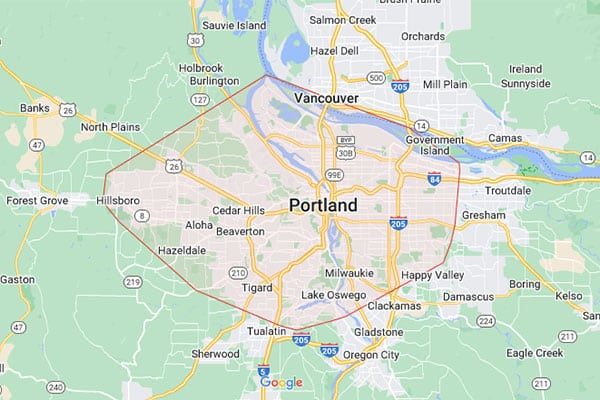Introduction to Softwash Systems
Softwash systems have changed the game when it comes to keeping the outside of your home sparkling clean. Unlike traditional pressure washing, which blasts away dirt (and sometimes even your paint or siding) with high pressure, softwashing uses low pressure combined with specialized cleaning solutions. This method gently but effectively removes dirt, mold, algae, and other unwelcome guests from your home’s exterior, roof, and even delicate surfaces like stucco or shingles. Not only does it clean, but it’s also safer for your home and the environment. The cleaning solutions used are designed to kill the organisms causing the dirt and buildup which means your home stays cleaner longer. Instead of just pushing the dirt around or risking damage to your property with high pressure, think of softwashing as giving your home a thorough and gentle bath. It’s the smarter, gentler way to clean.
The Risks of Traditional High-Pressure Washing
High-pressure washing might seem like a good idea to blast away all the dirt and grime from your home’s exterior. But, it can actually cause a lot of problems. Think of it as using too much force to clean something delicate. You wouldn’t scrub a delicate fabric with a rough brush, right? The same logic applies here. Using high pressure on your home can lead to ugly damage. For starters, it can strip away paint and finish from surfaces, leaving them looking worn out and old. Worse still, it can force water behind siding, potentially creating a perfect setup for mold and rot, which are big headaches and costly to fix. Not to mention, if the water pressure finds its way into your home, it could ruin your belongings and interior as well. Plus, using high pressure on brickwork or paving can blast out the sand that holds things together, leading to instability and a mess. High-pressure washing is not as simple and safe as it appears. It’s kind of like using a sledgehammer when what you really need is a scalpel.
Understanding How Softwash Systems Work
Softwashing is like giving your home a gentle bath. This method uses low-pressure water combined with special soaps to clean the exterior without the harshness of high-pressure power washing. Think of it as using a smooth touch rather than a strong force to get rid of dirt, algae, and mold. Here’s how it goes: water mixed with biodegradable detergents is sprayed onto your house’s surfaces at a pressure that’s way lower than what a power washer uses. This mix does the heavy lifting, loosening up the grime so it can be easily rinsed away. Since the pressure is soft, there’s less risk of damaging the paint, siding, or any delicate surfaces of your home. It’s effective not just because it cleans, but it also targets the root of the problem, like algae and moss, preventing them from coming back quickly. So, softwashing is not just about cleaning; it’s about caring for your home in the gentlest way possible.
Key Components of Softwash Cleaning Solutions
Softwash cleaning relies on low-pressure water and specialized solutions to clean exterior surfaces gently yet effectively. The key components that make up softwash solutions are as follows. Biodegradable cleaning detergents break down dirt, algae, and other organic materials without harming your plants or the environment. Bleach is often included at a controlled percentage not to damage surfaces but enough to kill mold, mildew, and bacteria. Water acts as the carrier for the cleaning agents, ensuring they spread evenly without causing erosion or damage. These components work together to ensure your home gets clean without the harsh effects associated with high-pressure washing. This method is especially good for siding, roofs, decks, and patios where damage can easily occur with more aggressive techniques.
Benefits of Choosing Softwash for Your Home
Choosing Softwash for your home cleaning is like choosing a gentle yet effective approach to maintain its beauty and integrity. Traditional pressure washing can be harsh, stripping away more than just dirt with its high intensity. Softwash systems, on the other hand, use low-pressure water combined with special cleaning solutions to remove dirt, mold, algae, and other substances safely. This method is not only kinder to your home’s surfaces, but it also provides several benefits. First, it’s safer for all types of exteriors, from delicate wood sidings to sturdy bricks, ensuring no damage. Second, Softwash can kill bacteria and algae at the source, making your home’s exterior cleaner for longer. Third, this method is eco-friendly, as it uses biodegradable cleaning solutions that don’t harm your garden or the environment. Lastly, choosing Softwash extends the life of your paint and siding, saving you money on repairs and replacements in the long run. In simple terms, Softwash protects your home while keeping it sparkling clean.
Types of Surfaces Ideal for Softwash
Softwash is perfect for a variety of surfaces around your home, offering a gentle yet effective cleaning solution. Let’s dive into where softwash shines. First, your roof. Softwash kills mold, algae, and moss without the harsh damage that high-pressure washing can cause. Next, siding. Whether you have vinyl, wood, or stucco, softwash removes dirt and grime without risking water damage or paint stripping. Wooden decks and fences also benefit. Forget about the splintering and stripping; softwash preserves the integrity while cleaning. For outdoor furniture, softwash extends the life by removing buildup without harming the material. Lastly, concrete driveways and walkways get a thorough clean, removing slippery algae and unsightly stains without etching the surface. Softwash is the gentle warrior your home needs for a safe and deep clean.
Environmental Advantages of Softwash Systems
Softwash systems stand out because they’re kinder to the environment. Traditional pressure washing blasts away dirt and grime but also can harm plants, contribute to soil erosion, and even introduce harsh chemicals into the ecosystem. On the other hand, softwash uses eco-friendly detergents that break down naturally. This means less worry about harming your garden or local wildlife. The water usage is also significantly lower. Softwash systems get things clean with less water, which is crucial during drought conditions or in areas with water use restrictions. Plus, the gentler approach of softwash prevents damage to your home’s surfaces, extending their life and reducing the need for repairs or replacements that can also impact the environment. To sum it up, softwash systems protect your home while being mindful of the planet.
How to Find a Professional Softwash Service
Finding a professional softwash service doesn’t have to be hard. Here’s what you should do. First, ask your friends or neighbors for recommendations. People love to share when they find a great service. Second, use the internet. Look for companies with good reviews and a strong online presence. Services that care about their image online usually care about the quality of their work. Next, check for proper licensing and insurance. This step is crucial. You want someone who’s legally allowed to work and can cover any accidents that might happen. Lastly, ask about their experience and specific services. How long have they been doing softwashing? What chemicals do they use? Are they environmentally friendly? A good service will be happy to answer all your questions. Remember, choosing the right service can make all the difference in safely and effectively cleaning your home.
Maintenance Tips After Softwash Cleaning
After your home gets a softwash clean, it’s crucial to maintain it properly to extend the benefits. Here’s how to do it without fuss. First off, regularly check and clean your gutters. Blocked gutters can lead to water damage, undoing the softwash’s good work. Next, keep plants and shrubs trimmed back from your house. Overhanging branches can drip water and deposit dirt on your clean surfaces. Also, ensure your home’s drainage is up to scratch. Water should always flow away from your foundation to avoid damage. Run a hose occasionally on your roof and walls; it’s like a mini softwash and helps keep dirt from building up. Lastly, inspect your home’s exterior after storms or severe weather. Fix any damage quickly to prevent further issues. These steps are easy and keep your home looking great longer after a softwash.
Conclusion: The Safe Choice for Home Cleaning
When it comes down to it, choosing a softwash system for cleaning the exterior of your home is a smart move. This gentle yet effective cleaning method is tough on dirt and mildew but easy on your home’s surfaces, making it both a safe and sensible option. Unlike the more abrasive methods like power washing, softwashing uses a low-pressure water stream combined with special cleaning solutions to remove grime without risking damage to your home’s siding, paint, or roofing. Not only does it protect your home’s exterior from potential high-pressure damage, but it also extends the life of the paint and other surface materials by keeping them clean and mildew-free. Opting for softwashing is a clear win for any homeowner looking to maintain their property’s beauty and integrity without compromising on safety. So, when considering the best way to clean your home’s exterior, remember that softwashing stands out as the safe and efficient choice.












